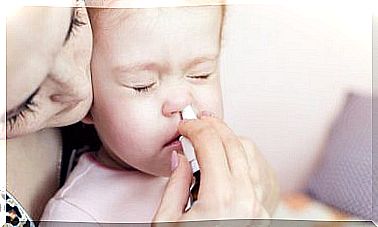Do You Know The 5 Tests Of The Apgar Test?

It is named after the pediatrician who developed it in the 1950s and also serves as a mnemonic for obstetricians, as each letter signifies an exam to be given to the newborn. Would you like to know what the apgar test is?
Apgar test: what is it
Developed in 1953 by an American pediatrician named Virginia Apgar, it is a clinical examination performed on newborns after delivery. This test involves not only the pediatrician but also certified nurses, neonatologists and midwives.
Each of these parameters carries a score of 0, 1 and 2. The maximum result is 10 and it means that the child is in perfect health. Anything below that number will require further examination for the parameter that does not meet the requirements.
With the Apgar test, it begins in the first minute of life and evaluates the level of tolerance that the newborn has to the birth process and its possible suffering. Each of the tests is carried out in one minute, so at five the general condition of the baby is already known. It allows reducing the mortality rate as well as predicting possible health problems and indicating early treatments

Apgar test evaluation criteria
Doctors use a rule of thumb to remember the five tests that newborns should have, using the letters of the last name of the pediatrician who developed them. Thus, A belongs to appearance, P to pulse, G to gesticulation, A to activity, and R to respiration.
The first evaluation is made on the color of the baby’s skin. If it is normal, 2 points are added, if it has blue extremities 1 point and if it is completely blue, 0 points. The second test is on the pulse, where the heart rate is evaluated. If it is more than 100 beats per minute, 2 points are added; if it is less than 100, 1 point and if it is null, 0 points.
The third exam refers to the gesture, through the reflexes and irritability that the baby presents on certain stimuli. If he sneezes, kicks or coughs as a reaction form, 2 points are added; if he grimaces or weakly cries, 1 point and if there is no response to stimulation, 0 points.
The fourth test has to do with activity and muscle tone also when stimulated. If the movement is active, add 2 points, if it presents any bending, 1 point and if it does not move any part of the body, 0 points. Finally, the fifth evaluation criterion is related to respiration. If it is strong, it is 2 points; if it is weak or irregular, 1 point and if it is absent, 0 points.

A newborn baby who scores between 7 and 10 points is in good health. Receiving between 4 and 6 points may mean that you require some immediate recovery treatment, for example in the incubator. If it is 1 to 3 points, you will need emergency care (assisted breathing or intravenous medications) and if the score is 0, it is most likely that your death will be determined.
A test that reduces the mortality rate
The Apgar test has been carried out for more than 50 years and has made it possible to reduce mortality rates in newborns, since immediate evaluation is the best way to treat or prevent certain pathologies or complications. With just five minutes many lives can be saved, especially if the pregnancy has not been controlled or if it was an emergency, premature or complicated delivery.
It is necessary to bear in mind that this test is not designed to prevent future health problems of the child, but to assess their situation at the time of birth.










